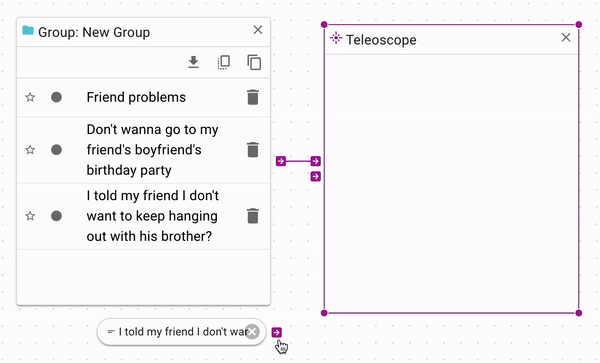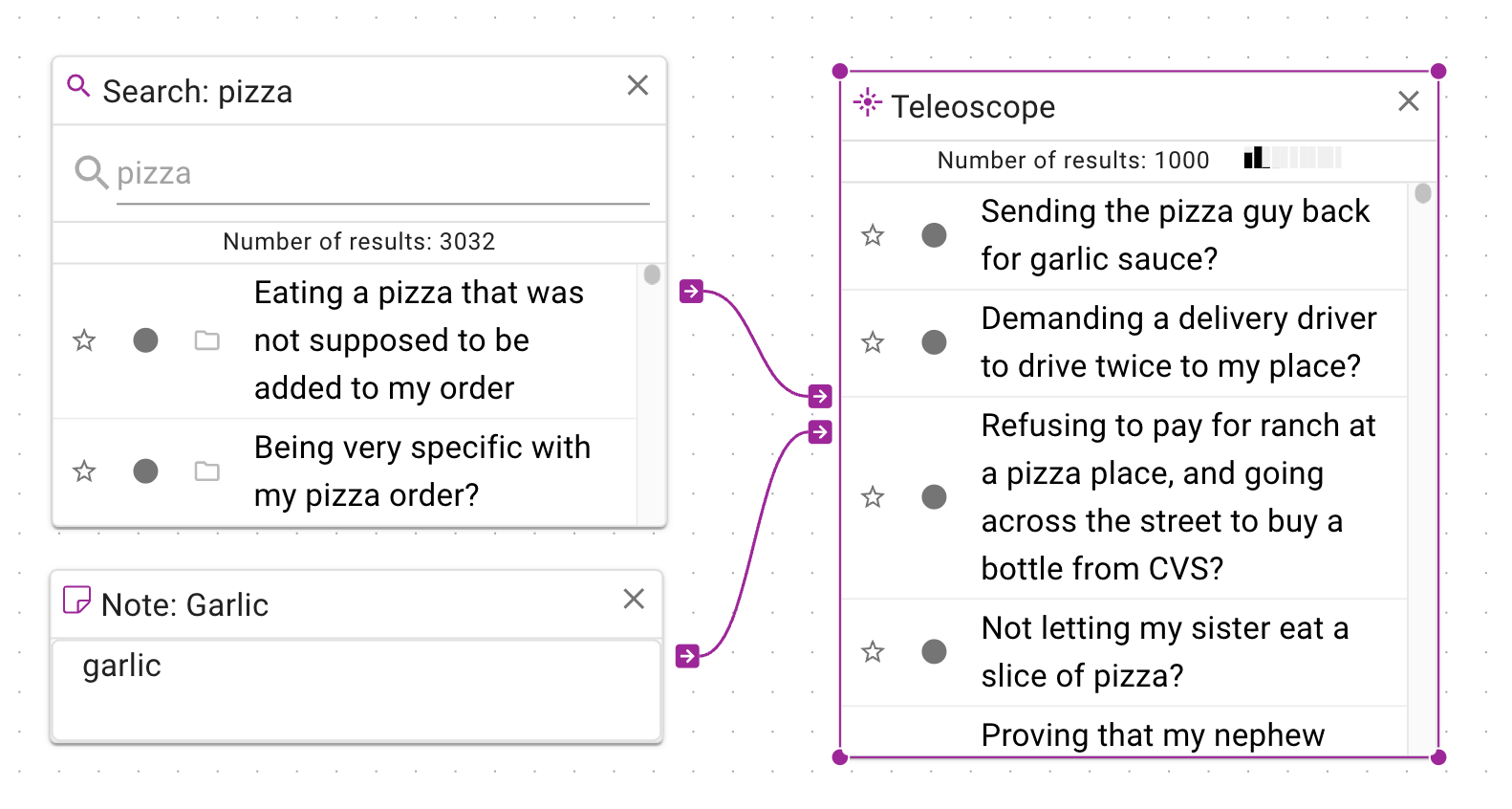Ranking, Sorting or Ordering
The Rank tool allows you to order a set of documents by similarity to one or more other documents. Let's see how it can be used to achieve many different cookbook solutions for exploring data.
 The Rank tool ranks documents according to a source document, group, or search. If you want to sort a
source by similarity to another source, you can connect the one you want to rank to to the top source
input, and the other to the bottom control input. As you can see in this example, the document that
the group is being sorted relative to is now at the top of the list.
The Rank tool ranks documents according to a source document, group, or search. If you want to sort a
source by similarity to another source, you can connect the one you want to rank to to the top source
input, and the other to the bottom control input. As you can see in this example, the document that
the group is being sorted relative to is now at the top of the list.
Find the most similar documents in order
Connecting a single document to the Rank tool will give back a list of the most similar documents to that document in order from most similar to least similar.
You can think of this as asking the computer to find you the documents that it thinks has the most overlap in content and theme based on words and phrases from each document. You might not agree with the computer's assessment of similarity, but you're likely to find some similar enough documents.
You might notice common words, phrases, or similar nouns. For example, a document with wifi given as
a control for the Rank might return documents
that talk about wifi specifically, or technology generally. That's because it's likely that people
use similar phrases to talk about both wifi and, say, netflix.
Mix the meanings of documents
Connecting multiple documents to the Rank will give you a list of the most similar documents to all documents you have connected. You can think of this as the computer finding the documents that it thinks is most similar to the average content of the documents.
Ranking a specific source

Here's a pattern where you can rank a search by word. On the left, you can see that the
pizza search is unordered; by adding the Note as a control with the word garlic, the pizza search
is now ordered by documents that are similar to the word garlic.
How to use this in your project
You can use a Rank to discover new documents that you want to add to a theme. You can also use it to prove to yourself that documents do not exist within a particular data source, i.e., that you've reached a saturation point.